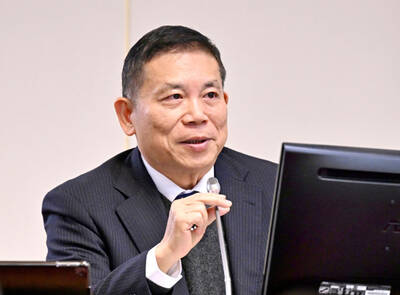Royal Philips Electronics NV approached Matsushita Electric Industrial Co and other buyout firms about selling its stake in LG.Philips LCD, according to a Merrill Lynch & Co internal note.
"We're hearing that Philips tapped all the various parties, not only industrial companies, but also financial companies like big private equity groups," Hong Kong-based Merrill analyst Daniel Kim, who covers flat-panel makers, wrote in the note written on Wednesday.
A sale to Matsushita would be "very positive" for LG.Philips because the transaction would ensure orders from the maker of Panasonic brand devices, Kim wrote in the note. Selling a 33 percent stake in LG.Philips, worth about US$5 billion, to Osaka-based Matsushita is one of many scenarios, Kim said in the note.
Philips chief executive officer Gerard Kleisterlee is seeking to focus on businesses that are less sensitive to economic swings than industries such as semiconductors and flat-screens. This month, Philips sold 80 percent of its chip subsidiary for US$4.4 billion and repeated its intention of selling its stakes in LG.Philips LCD and Taiwan Semiconductor Manufacturing Co (台積電).
Kim's note did not specify how he knew about the internal discussions.
Jayson Otke, a spokesman for Amsterdam-based Philips, declined to comment beyond repeating earlier comments the company plans to lower its stake in the liquid-crystal-display (LCD) venture in "a responsible manner." Akira Kadota, a Matsushita spokesman in Tokyo, also declined to comment.
Matsushita is the world's largest consumer-electronics maker.

Taiwan will prioritize the development of silicon photonics by taking advantage of its strength in the semiconductor industry to build another shield to protect the local economy, National Development Council (NDC) Minister Paul Liu (劉鏡清) said yesterday. Speaking at a meeting of the legislature’s Economics Committee, Liu said Taiwan already has the artificial intelligence (AI) industry as a shield, after the semiconductor industry, to safeguard the country, and is looking at new unique fields to build more economic shields. While Taiwan will further strengthen its existing shields, over the longer term, the country is determined to focus on such potential segments as

UNCERTAINTY: Innolux activated a stringent supply chain management mechanism, as it did during the COVID-19 pandemic, to ensure optimal inventory levels for customers Flat-panel display makers AUO Corp (友達) and Innolux Corp (群創) yesterday said that about 12 to 20 percent of their display business is at risk of potential US tariffs and that they would relocate production or shipment destinations to mitigate the levies’ effects. US tariffs would have a direct impact of US$200 million on AUO’s revenue, company chairman Paul Peng (彭雙浪) told reporters on the sidelines of the Touch Taiwan trade show in Taipei yesterday. That would make up about 12 percent of the company’s overall revenue. To cope with the tariff uncertainty, AUO plans to allocate its production to manufacturing facilities in

Chizuko Kimura has become the first female sushi chef in the world to win a Michelin star, fulfilling a promise she made to her dying husband to continue his legacy. The 54-year-old Japanese chef regained the Michelin star her late husband, Shunei Kimura, won three years ago for their Sushi Shunei restaurant in Paris. For Shunei Kimura, the star was a dream come true. However, the joy was short-lived. He died from cancer just three months later in June 2022. He was 65. The following year, the restaurant in the heart of Montmartre lost its star rating. Chizuko Kimura insisted that the new star is still down

While China’s leaders use their economic and political might to fight US President Donald Trump’s trade war “to the end,” its army of social media soldiers are embarking on a more humorous campaign online. Trump’s tariff blitz has seen Washington and Beijing impose eye-watering duties on imports from the other, fanning a standoff between the economic superpowers that has sparked global recession fears and sent markets into a tailspin. Trump says his policy is a response to years of being “ripped off” by other countries and aims to bring manufacturing to the US, forcing companies to employ US workers. However, China’s online warriors